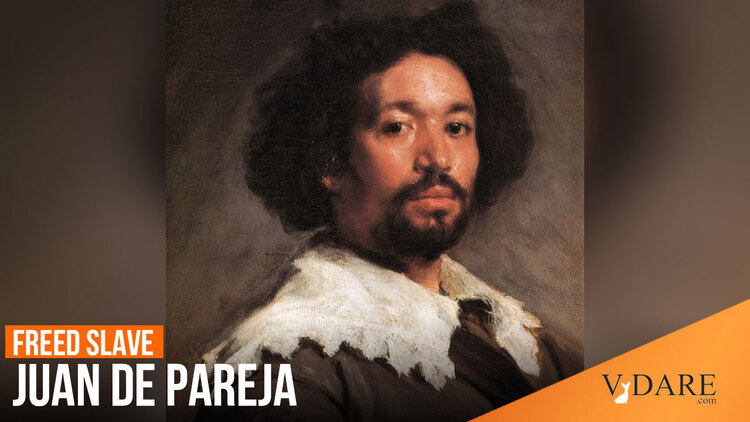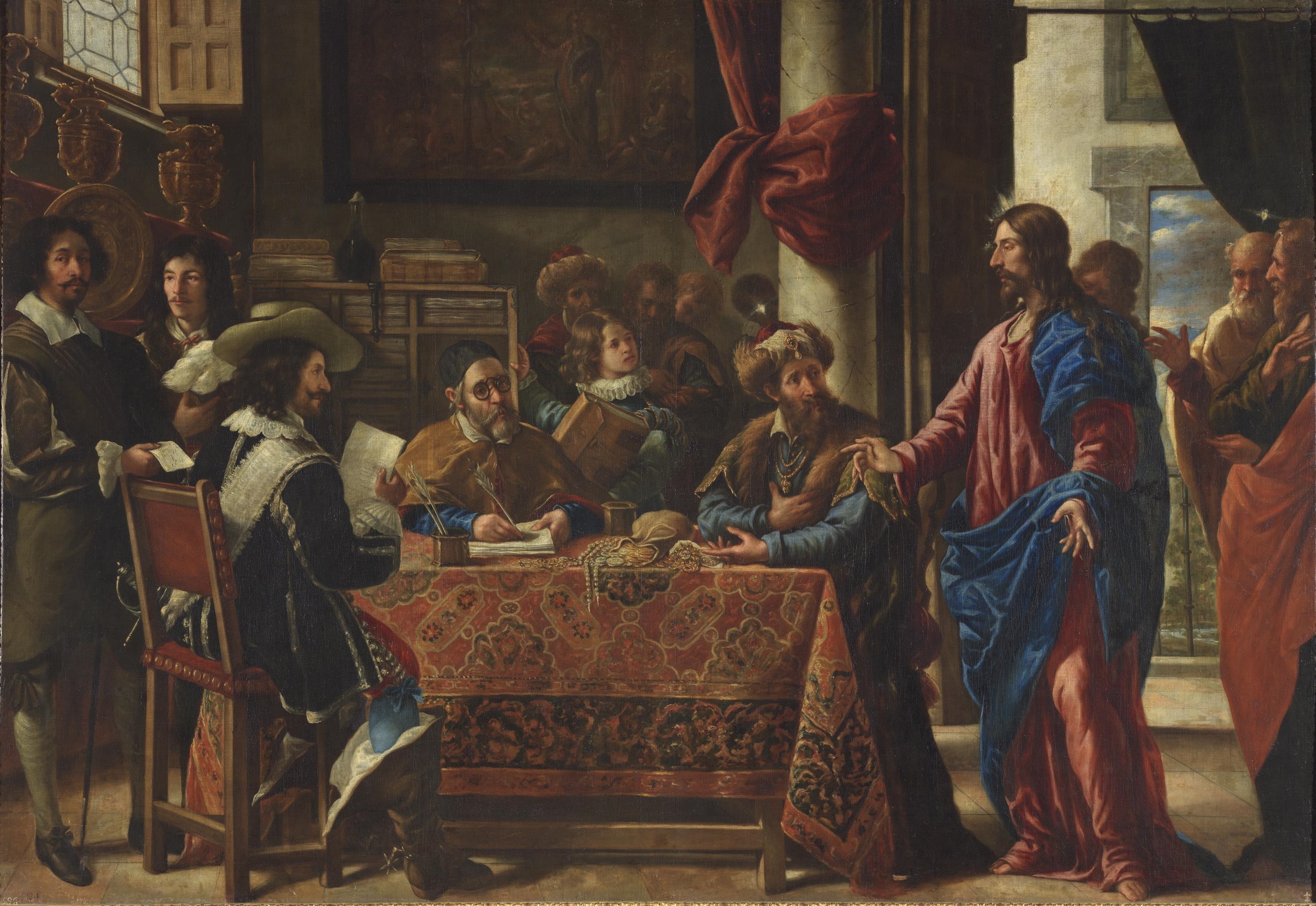![]()
When I was 12 in 1971, I recall reading in the library that the new record for the most expensive work of art of all time was Diego Velázquez’s 1650 portrait of his assistant and slave Juan de Pareja, which had been purchased by the Metropolitan Museum of Art for $5.5 million. This was part of the Black Is Beautiful movement of the era, but then again you had to admit that Velázquez’s portrait of his right-hand man was indeed beautiful.
Velázquez submitted this portrait to Pope Innocent X as his job application and was commissioned to do his famous slightly terrifying portrait of the not-so-innocent-looking Innocent X:
![]()
Velázquez emancipated de Pareja nine months later, and his assistant went on to a successful (although not superb) career as a pretty good professional painter. That’s de Pareja at the far left in his 1661 painting that hangs in the Prado in Madrid:
![]()
De Pareja wasn’t as good a painter as Velázquez, but then, who was? Velázquez probably wasn’t the greatest painter of all time, but, then again, maybe he was. The likelihood that Velázquez was the greatest painter ever is less than 50% but also definitely higher than 0%.
![]()
Think how lucky Juan de Pareja was that his African ancestors were enslaved by another tribe and he wound up owned by perhaps the greatest painter of all, who set him free and helped him become a successful professional painter.
“Thank God my granddaddy got on that boat!”—Muhammad Ali.
From the New York Times:
A Familiar Face at the Met, Now in His Own Light
Juan de Pareja was immortalized in a portrait by Velázquez, his enslaver for two decades. Now he takes center stage with his art and personal history.
In 1650, Diego Velázquez painted this ennobling portrait of Juan de Pareja, a studio assistant enslaved in his studio. Pareja became an artist in his own right, and his paintings are the focus of exhibition at the Met.
By Jason Farago
April 7, 2023
…assistant Juan de Pareja, who has been enslaved in Velázquez’s household…
He became an artist in his own right, and his style diverged in surprising ways from his former enslaver’s: lighter, in higher spirits, quite his own. …
Most likely Pareja was the son of an enslaved woman and a white Spaniard father, perhaps her enslaver. …
Nine months after Velázquez painted his enslaved assistant, he freed him
I realize you’d get fired from the NYT if you refused to sound like an illiterate for using the term “enslaver” for the white slaveowner Diego Velázquez rather than for the black enslaver who enslaved free blacks in Africa.
But do know that you sound like an illiterate.
Pareja’s ancestors were enslaved by other blacks in Africa, but he was freed by the great Velázquez. Instead of referring to the great painter Diego Velázquez as his assistant Juan de Pareja’s “enslaver,” it would be more correct to refer to Velázquez as his “liberator.”

















